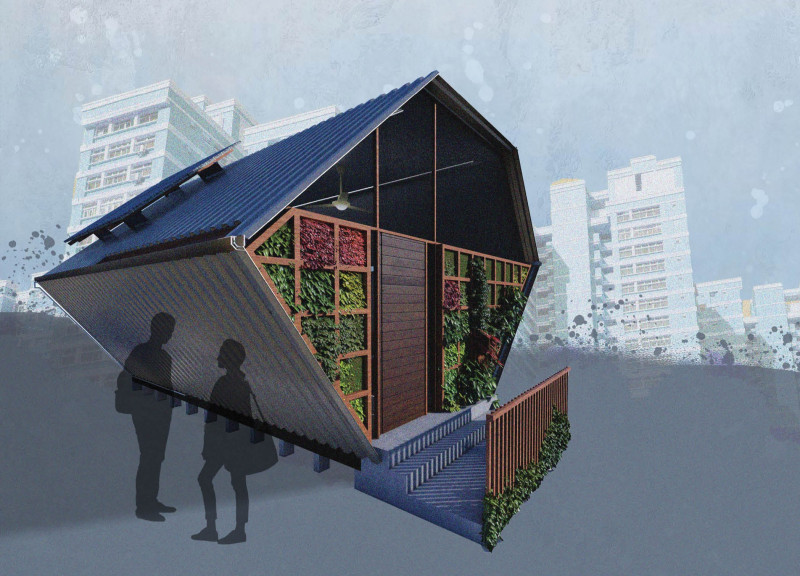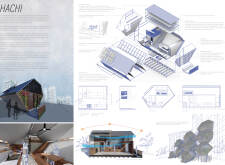5 key facts about this project
The Hachi Home is a micro-apartment designed for urban living in Singapore, addressing the demands of contemporary residential spaces. Located in a busy city known for its tropical weather, the project aims to create a living environment that is both adaptable and sustainable. The design focuses on providing flexible spaces suitable for young professionals, particularly in light of the challenges that arose during the Covid-19 pandemic.
Architectural Form and Layout
The architecture features an extruded hexagonal shape with slant walls that expand the interior space. This unique design allows multiple units to fit together efficiently, both vertically and horizontally, depending on site conditions. The layout fosters a sense of community while responding to the challenges of compact living.
Sustainable Features
Sustainability is a key focus of the Hachi Home. The project includes solar-powered energy systems and mechanisms for harvesting rainwater. These elements reduce the reliance on traditional energy sources and promote efficient use of resources. Such features are increasingly important in urban areas that experience heavy rainfall and high energy demands.
Materiality and Construction
Material selection plays a vital role in the Hachi Home’s design. The exterior uses corrugated metal that comes from recycled shipping containers, offering durability and protection from weather conditions. A zinc coating is applied to this metal, which helps prevent rust. Framed corrugated polycarbonate windows contribute to natural light within the space and require less maintenance than traditional windows.
Integration of Nature
Incorporating elements of nature is another distinctive aspect of the Hachi Home. It features vertical farming walls that allow residents to grow their own produce. This not only enhances the living experience but also improves air quality and helps with cooling, addressing urban heat challenges effectively.
The interior design uses recycled pallet wood for cabinetry and furnishings, demonstrating a commitment to sustainability. Rockwool insulation is also included in the construction, enhancing the thermal performance of each unit. These design choices reflect a comprehensive approach to creating an energy-efficient and environmentally responsible living space.



















































